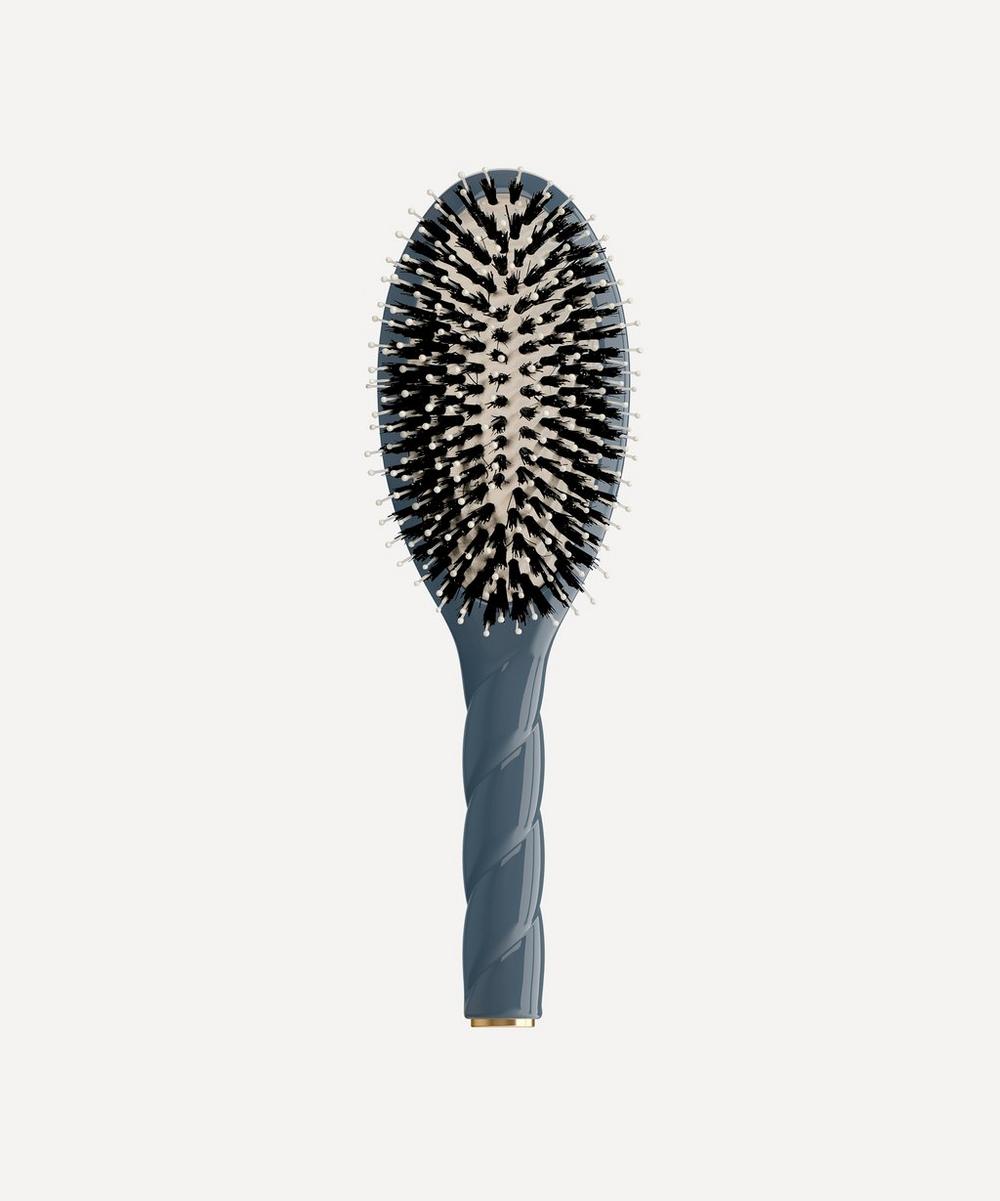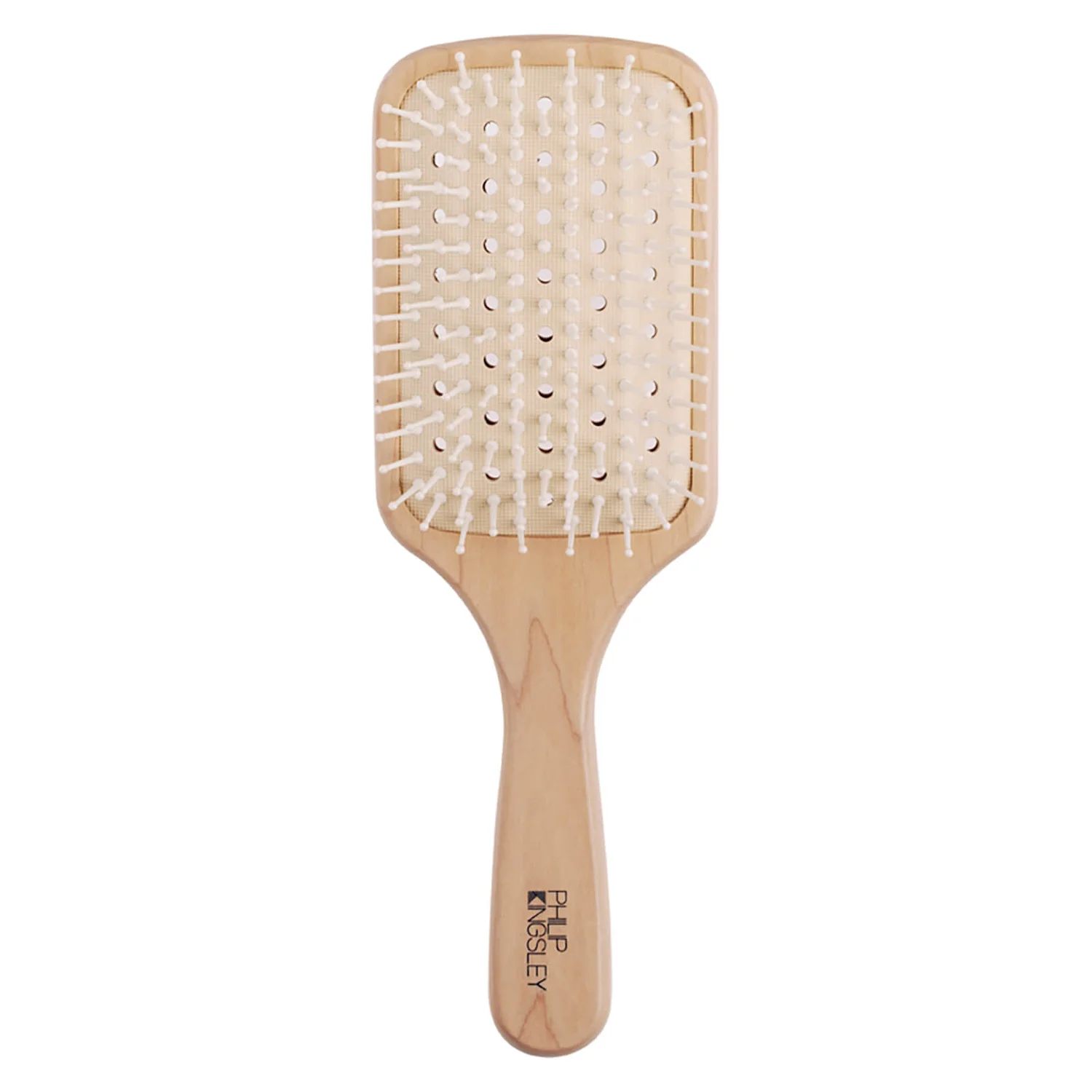If You’re Dealing with Oily Roots and Dry Ends, You’re Probably Missing This One Step
Rediscover the simple ritual your hair’s been missing


Oily roots and dry lengths and ends is one of the most common haircare complaints—and it is one that has plagued me for as long as I can recall. As a teen, I would wash my hair daily in a desperate attempt to ward off that greasy, slicked-down look, but would often to spend my lunch break shaking a bottle of talc onto my scalp (this was well before dry shampoo became a bathroom staple).
So you can imagine my surprise when, just last week, a solution to this long-standing problem was presented to me—one so simple, so obvious, yet never mentioned to me in over a decade of being a beauty journalist. The solution in question? Hair brushing.
It turns out that, beyond detangling and styling, brushing is the all-too-often forgotten step in our routines that can help redistribute natural oils from root to tip — along with offering a host of other benefits. "In recent years, haircare has been dominated by products while brushing, the most fundamental gesture, was overlooked," says Flore des Robert, co-founder of La Bonne Brosse. "There’s also been a misconception that brushing causes breakage, when in fact the right brush and technique do the opposite. Luckily, we’re seeing a renaissance: brushing is coming back into the spotlight, especially in places like the UK, which has a long and noble tradition of hair brushing."
Here’s how to make the most of your hair-brushing ritual, according to the pros.
How does brushing help prevent oily roots and dry ends?
"Brushing is much more than detangling," says de Robert. "Your scalp produces natural oils that are essential, but if they stay at the roots, you end up greasy on top and dry at the lengths. Brushing is the only natural way to distribute those oils evenly along the hair shaft. With regular brushing, roots stay fresher longer, and ends get the hydration they crave. It’s nature’s most elegant conditioner."
Anabel Kingsley, Lead Trichologist & Brand President at Philip Kingsley, agrees: "Daily brushing means that the natural oil from the scalp is redistributed throughout the hair, leading to it looking less greasy.
Which brush is best for your hair and scalp?
According to des Robert, the ideal brush depends on two key factors: your scalp’s sensitivity and your hair’s texture. “A finer bristle, like pure boar bristles, is wonderful for delicate scalps and normal hair,” she explains. “A mixed bristle (boar and nylon) adds extra strength for thicker or curlier hair, while still being gentle. We designed each brush with different needs in mind, so everyone can find their perfect daily tool. We’ve even created a quick online quiz on our website to help people discover theirs.”
Celebrity news, beauty, fashion advice, and fascinating features, delivered straight to your inbox!
When it comes to choosing the right brush, Kingsley says the most important factor is gentleness. “A good test is to run your brush over the back of your hand. If it feels harsh or leaves red marks, it’s too rough for your strands,” she advises. “The Philip Kingsley Paddle Brush, for instance, has been specifically designed to be kind to both hair and scalp. It features rounded, widely spaced flexible plastic prongs and a vented, cushioned base. It’s also lightweight, which makes styling easier. For those who prefer round brushes, our Vented Radial Brush has bristles interspersed with rounded prongs to minimise damage.”
How should you brush your hair to rebalance oily roots?
Always start by gently detangling: "Brush hair starting at the ends and gradually working your way up to the roots to minimise breakage," says Kingsley. "Tugging too hard on tangles can cause strands to snap, and over time, rough brushing can lead to frayed hairs, breakage and split ends."
Once tangles have been eradicated, you can focus on rebalancing the oil distribution. " Work your way up to the roots to stimulate the scalp, then the other way round to distribute natural oils," advises des Robert. "The sebum on your scalp needs to be evenly distributed down the lengths of your hair. The movement should be slow and mindful. There’s no magic number of strokes, but think of it like mindful breathing: enough repetitions to create calm, balance and shine."
A few minutes, twice a day, is more transformative than people expect, des Robert notes.

Lottie Winter is the Beauty Director at Marie Claire UK. With over a decade of beauty journalism under her belt, she brings a desire to cut through the noise and get to what really matters–– products that deliver, conversations that empower, and beauty that makes people feel like their best selves.

